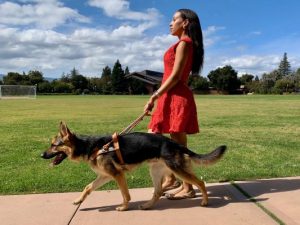Over the next three years, Houssam Abbas will carefully send 80 modified Traxxas RC rally cars—the Ford Fiesta model—to research facilities around the country. Some will go to Arizona State University, others to Clemson University, the State University of New York at Stony Brook, UCLA, Vanderbilt University, or the University of Iowa. In each place, researchers will open their packages, take out the 21-inch, modified, 1/10th-scale car, and begin to run tests.
Abbas, an assistant professor of electrical engineering and computer science at Oregon State University, hopes the toys are the key to cracking the self-driving car. He and colleagues believe their miniature, cheap, open source, self-driving “platform” will give 33 scientists of all stripes chances to experiment with cutting-edge technology at a critical moment: before autonomous vehicles hit the streets en masse. In August, the group won a $1.5 million grant from the National Science Foundation to pursue the idea.
Want the latest news on self-driving cars in your inbox? Sign up here!
Today, full-sized self-driving vehicles exist, kind of, sort of. Google sibling Waymo runs a commercial robotaxi service in the Phoenix area, though riders are limited and a safety operator sits behind the steering wheel. Cruise, owned by General Motors, tests its Chevrolet Bolts in San Francisco, but delayed a plan to launch a service there this year. Tesla CEO Elon Musk has promised that 1 million self-driving electric vehicles will roam the country by next year, though experts are skeptical.
Those companies, Abbas says, are driven by economics. “As researchers, we have the freedom to ask the harder questions,” he says. “We had this realization that we need everybody to pitch in for us to build reliable, efficient autonomous vehicles.”
So the NSF grant will allow Abbas and colleagues at the University of Pennsylvania and Clemson University to send mini-cars to 33 collaborators in a variety of disciplines: safety systems, energy efficiency, cybersecurity, and robotics.
The researchers are hoping their mini-car, which comes out of a larger project called “F1tenth” (get it?), will become the go-to open source platform for autonomous vehicle researchers worldwide. Today, the team sometimes only realizes that someone is working with their car, complete with Nvidia Jetson GPU, 9-volt battery, Orbitty carrier board, and six-port USB hub, when they ask a question on the project’s public forum.
The NSF mini-car project is among several using small cars to do big things. Over the past five years, researchers in artificial intelligence, cybersecurity, and robotics have used mini-cars to both teach and learn about autonomy. At MIT, where using model cars to teach about autonomy got its start in 2015, students program and then race models through gloomy, circular basements. In California’s UC Berkeley, professors and teaching assistants distribute 40 to 50 miniature vehicles to undergrad students each year for a (sometimes literal) crash course in self-driving software and hardware. The University of Washington has tiny, colorful race cars called MuSHRs—Multiagent System for non-Holonomic Racing, of course.
At Georgia Tech, a larger vehicle—3 feet long and 50 pounds—helps grad students experiment with aggressive autonomous driving: high-speed maneuvers, controlled drifts, jumps. “The first time you do those, you don’t want people in the vehicle,” says Brian Goldfain, who used that larger Autorally car platform to complete his PhD dissertation. “The cars allow us to explore the limits of the technology in a ‘safe space,’ so to speak.” The Georgia Tech team has used the Autorally platform to create, among other things, an algorithm that can control all sorts of robots, including cars, drones, and even robotic hands.
Small autonomous vehicles are great because they’re safer than the real thing. At Berkeley, grad students must start testing autonomy-related algorithms on mini-vehicles; safe testing, PhD student Ugo Rosolia points out, is a skill researchers must learn too. The models are also way cheaper than the real thing. A full-sized test autonomous vehicle can run into millions of dollars thanks to expensive hardware like lidar sensors. The Berkeley vehicles cost $500 to make. The larger Georgia Tech cars cost around $14,000, still cheap enough to let a grad student modify them, and run them through rough tracks without freaking out when something hits the dirt too hard. For researchers, the F1tenth cars will be free, courtesy of the NSF grant.
Autonomous mini-cars are also fun. The F1tenth runs biannual autonomous vehicle races, which college teams clamor to join; MIT uses its cars to get middle- and high-school girls comfortable with robotics. “These are just big toys,” says Goldfain, the Georgia Tech PhD. In fact, he’s used miniature self-driving cars to turn big self-driving cars into a career. Today, he’s building the tech at the Toyota Research Institute.
More Great WIRED Stories
- Netflix, save yourself and give me something random to watch
- Tesla’s “Smart Summon” will fetch your car—sometimes
- How amateur video is helping us understand deadly tsunamis
- Google’s “quantum supremacy” isn’t the end of encryption
- An end to pornography, sophistry, and panty raids
- 👁 If computers are so smart, how come they can’t read? Plus, check out the latest news on artificial intelligence
- 📱 Torn between the latest phones? Never fear—check out our iPhone buying guide and favorite Android phones



